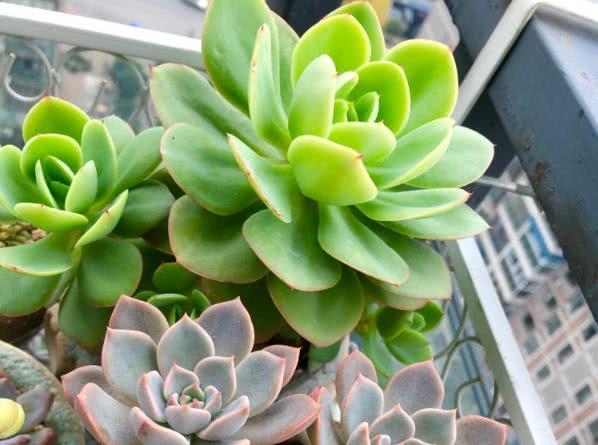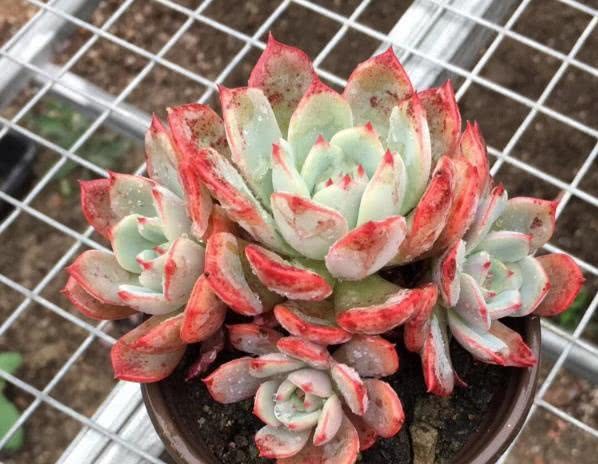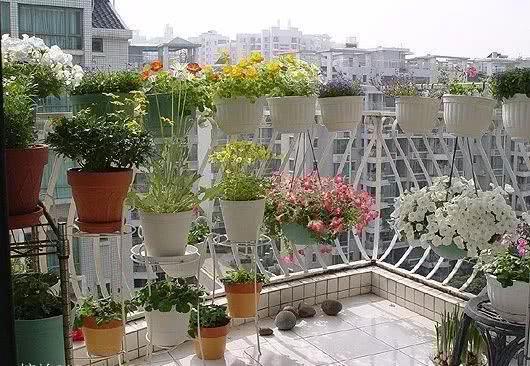What if the branches of succulent plants begin to wither after they are replanted?

What if this happens after succulent plants are replanted? It is recommended to change the soil, re-cutting, remember: the knife must be disinfected with alcohol or wine, dry for two days before planting. For compact succulent plants, the principle of branch cutting is the same. Just find a suitable position to put in the knife, the average plant will slowly fibrosis from the root to the top after a year of growth, and the more the top branch is, the more tender it is, and if it is too tender, it is not easy to cut off the roots and dehydrate.
It is also vulnerable to bacteria, and the branches of the wound soften off without healing. Look for the location of slight hardening and cut it off. The following mother plant leaves some leaves to continue to grow new plantlets (also known as head bursts). For example, the position where the Luna lotus is beheaded should be 1/3 of the whole plant. It is enough for the mother plant to leave a circle of leaves. Cut off the head of the succulent, the wound do not touch anything, waiting for its natural healing.
The root of the plant can also be washed. Make sure that basically all the soil carried on the roots is washed away. Because it probably contains a lot of eggs and bacteria. Wash gently, the root injury is inevitable, but as little as possible. You can shake the roots back and forth in a basin of water. It is recommended that you do not turn on the big faucet and wash it with very strong water, so that the roots will break a lot. This repeated shaking and soaking several times, you can see the white main root on it.
In terms of soil, I mainly use red jade soil, which is covered with stone at the bottom of the basin, and then put some large grains of deer marsh soil to facilitate ventilation, and then cover the red jade soil at the top. In fact, in the past, I mostly used the most common peat mixed with a little vermiculite, and there was no problem with sprouting. I just said it was not as clean as red jade. After preparing the soil, the leaf insertion has a requirement on the humidity of the basin soil, too wet leaves are easy to rot, completely dry is not conducive to rooting, and rooting is not conducive to root growth. Therefore, the basin soil should not be too wet, but it should be kept relatively moist, especially the topsoil, so I usually spray the topsoil with a spray can before planting.
Oblique insertion does not need to be very deep, as long as it ensures that the leaf can stand obliquely on the soil surface, do not press too hard, otherwise the new buds may be unearthed; in addition, do not directly insert the root of the leaf into the medium, as it is easy to hurt the root. To know that rooting and sprouting is produced from the leaf root, you can use a small stick to insert a shallow hole, and then put the leaf into it.
If it is a large area of leaf planting, it can be like cultivated land ridges, divide the ridges, put the leaves into the ridges, is it very simple? Depending on the seasonal environment of the plant, rooting and sprouting begins in about 15 days, and if you are lucky, a leaf will be accompanied by two-headed or even many-headed plants. After taking root, it should be watered in time to ensure that the root absorbs water, and the light should be seen gradually when you see the outcrop of small life.
Here is a gathering place for succulent plant lovers, sharing succulent maintenance skills, welcome to follow and exchange.
- Prev

Which kind of soil is used to breed succulent plants at home to take root and sprout?
If succulent plants are sown, peat soil can be used for sowing. Many flower lovers have shifted from buying succulent plants to sowing their own seeds. Sowing succulent plants can not only get a large number of seedlings, but also increase the sense of success.
- Next

If you want the balcony at home to be beautiful, you can't mess up the layout of these plants.
The balcony of many flower friends may be relatively small, and whether it can be arranged or not depends entirely on the area. If the balcony area is small, plant some perennial herbs, climbing vines are also good. If the balcony area is large, for planting plants.
Related
- Wuhan Hospital Iron Tree Blooming Result Was Instantly Frightened by the Gardener Master
- Which variety of camellia is the most fragrant and best? Which one do you like best?
- What is the small blue coat, the breeding methods and matters needing attention of the succulent plant
- Dormancy time and maintenance management of succulent plants during dormancy
- Minas succulent how to raise, Minas succulent plant pictures
- What are the varieties of winter succulent plants
- How to raise succulent plants in twelve rolls? let's take a look at some experience of breeding twelve rolls.
- Attention should be paid to water control for succulent plants during dormant period (winter and summer)
- Watering experience of twelve rolls of succulent plants
- Techniques for fertilizing succulent plants. An article will let you know how to fertilize succulent plants.

